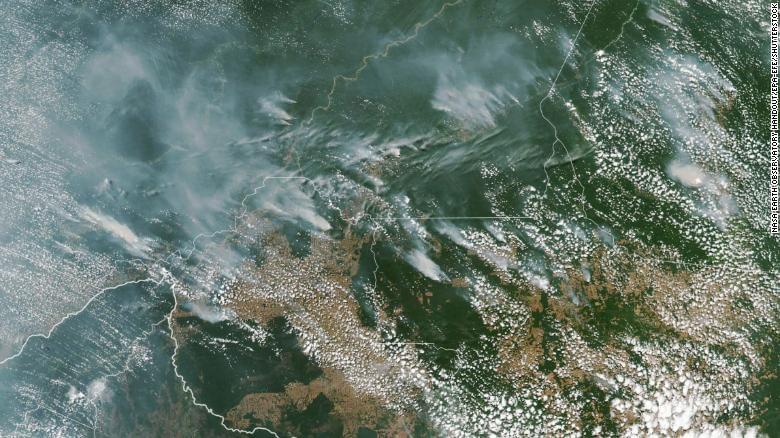Photo credit: NASA Earth Observatory Handout
The Amazon rainforest is on fire and has been for about three weeks now.
What is known to the world as the “planet’s lungs,” has had more than 72,000 fires since January of this year, according to the National Institute for Space Research. That’s an 83% increase from last year.
The Amazon produces 20% of the oxygen in the planet’s atmosphere and is the largest rainforest. For those who believe in climate change, this rainforest is extremely vital in slowing down global warming.
It’s reported that the smoke from the fires has reached Sao Paolo, which is more than 1,700 miles away. Citizens have posted images of how pitch black the sky has gotten.
🌎Just a little alert to the world: the sky randomly turned dark today in São Paulo, and meteorologists believe it’s smoke from the fires burning *thousands* of kilometers away, in Rondônia or Paraguay. Imagine how much has to be burning to create that much smoke(!). SOS🌎 pic.twitter.com/P1DrCzQO6x
— Shannon Sims (@shannongsims) August 20, 2019
Some celebrities have used their social media platforms as well, to bring attention to the wildfires.
The European Union’s satellite program released a map of the smoke covering almost half the entire country and spilling into neighboring countries like Bolivia, Peru, and Paraguay.
From the other side of Earth, here’s the latest on the Amazonia fires 🌳
Produced by @CopernicusEU’s atmosphere monitoring service, it shows the smoke reaching the Atlantic coast and São Paulo 🇧🇷
DATA HERE▶️https://t.co/Q6qzFdPfIT pic.twitter.com/aJKU2YwRpJ
— WMO | OMM (@WMO) August 20, 2019
The World Wildlife Fund has warned us if the fires in the Amazon reach a point of no return, it can become a dry savannah and no longer be habitable for its wildlife. The WWF says if that occurs, the Amazon will obviously no longer be a source of oxygen, but instead start emitting carbon – and what does carbon do? It increases climate change!
Conservationists believe Brazilian President Jair Bolsonaro is the cause of the forest fires. They say he has allowed loggers and farmers to clear the land.
Whatever the reason may be, these fires are bad and can lead to extreme consequences for the world.


